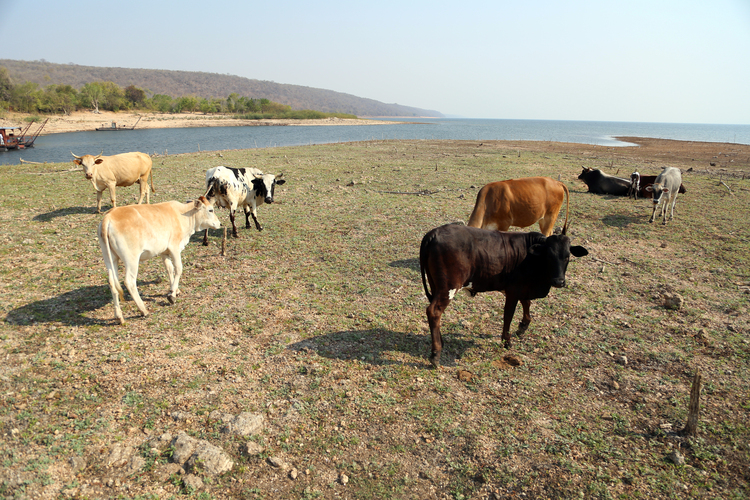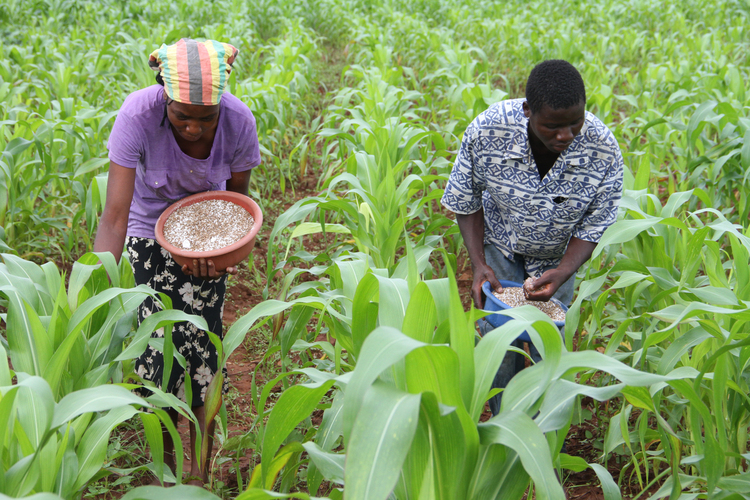
The Sunday Mail

In his maiden State of the Nation Address since the adoption of the new constitution, President Mugabe proposed a 10-Point plan which will be used to stimulate economic growth and create employment opportunities.
The plan will be anchored on the agriculture sector and on value addition and beneficiation of agricultural and mining resources.

Agriculture has always been the backbone of Zimbabwe’s economy
Stakeholders in the agriculture and mining sectors welcomed the plan and also contributed their views on issues to do with revitalising agriculture, beneficiation and value addition.
Agriculture
Mr Peter Gambara, an agricultural economist explained what “revitalising agriculture and the agro-processing value chain” means.
“It implies that the sector we are talking about used to have good days which are now gone and, therefore, will need to be restored to that status. Agriculture has always been the backbone of Zimbabwe’s economy. It provides employment and income for 70-80 percent of the population.”
“Agriculture also supplies 60 percent of the raw materials required by industry and contributes 40 percent of total export earnings. It also directly contributes 15 to 19 percent of annual GDP,” Mr Gambara said.
He said special arrangements like contract farming can contribute to a major revival in the growing of a crop.
Mr Patrick Muvingi, the spokesperson of the Hippo Valley Progressive Sugarcane Producers, said small-scale sugarcane farmers must take a leaf from sugarcane farmers in India.
“India is a perfect example of how small-scale sugar cane farmers can add value to their crops. Sugar cane farmers in India have their own milling plants and the farmers produce their own ethanol, sugar, molasses and cane spirits. We need that to happen to our farmers,” Mr Muvingi said.
According to Mr Muvingi, the establishment of small-scale sugar cane millers encourages competition among millers, resulting in farmers getting fair prices for their sugar cane.
“In our case, we only have one miller and this is not a healthy situation. Small-scale sugar cane farmers can produce their own electricity, therefore, reducing the country’s dependency on Zesa. Value addition is the way to go,” Mr Muvingi said.
In his speech, President Mugabe underlined the importance accorded to agriculture by announcing a parastatal reform programme.
Under the programme, Government will resuscitate the Grain Marketing Board, the Cold Storage Company and Cottco Holdings. These are key players in the agriculture sector which is the major employer in the country. Government is set to take over the majority shareholding in Cottco through a debt-equity swap deal.
Mining
In 2015, mining, according to President Mugabe, is exhibiting growth which is well above 3,5 percent. The growth is driven primarily by substantial increases in gold, nickel, chrome coal output.
President Mugabe said Government will maintain the policy thrust on beneficiation and value addition which is supported by other reforms which enhance transparency and accountability in the sector.
The Zimbabwe Miners’ Federation has applauded Government’s stance on beneficiation and value addition. Mr Dosman Mangisi, the ZMF spokesman, however, said a number of issues affecting small-scale miners must be addressed first.
“Progress has been registered in the small-scale mining sector. A lot of our miners were able to set up their own milling plants and this is encouraging. In terms of adding value, I think small-scale farmers are yet to fully benefit,” Mr Mangisi said.
According to Mr Mangisi, gold remittances by the small-scale mining sector was at 667kgs during the second quarter of the year.
At its peak in 2004, small-scale miners produced 17 tonnes before output fell to 12,5 tonnes in 2005.
The ZMF is targeting production levels of 20 tonnes this year. It is estimated that about 1,5 million people are engaged in artisanal mining activities. The Zimbabwe Mining Federation puts the number of people who are directly employed by the sector at 50 000. The ZMF says the revival of Kamativi Mine is also a positive development.
“For beneficiation and value addition to be fully realised, Government should urgently address a number of issues, chiefly among them the resuscitation of the Mining Affairs Board which will look into the affairs of the miners,” added Mr Mangisi.
Mr Mangisi said the situation obtaining in chrome mining is not healthy and must be urgently addressed.
“Close to 78 percent of small-scale chrome miners are under tribute.
‘‘Big mining companies are still holding on to claims for speculative reasons and demand five percent of the ore that is produced by the small-scale miners.”
“We cannot talk about value addition and beneficiation when the small-scale miners are not in control of the raw materials,” added Mr Mangisi.
Calls have been made for small-scale miners to venture into public-private partnerships. The ZMF says the majority of the small-scale miners have not been paid for the deliveries they made during the past four months.
Calls for Government to repossess the claims that are being held for speculative reasons have been growing louder. Early this year, Government announced plans for the setting up of gold-buying centres as a way of formalising illegal gold panning activities.
According to ZMF, the $100 million that Government promised for the setting up of the centres is yet to be released two years on.



